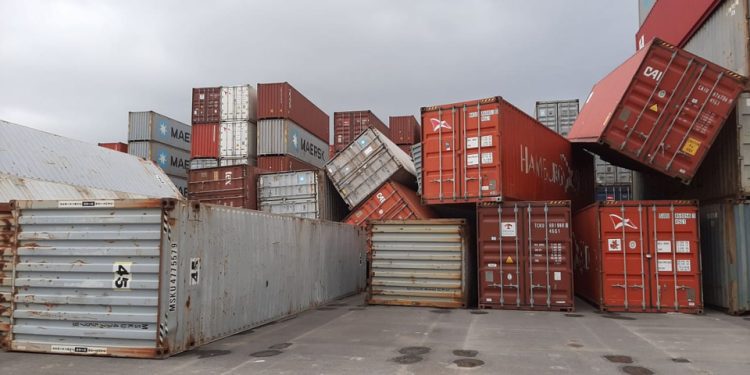Strong wind gusts can cause container stacks to topple
APM Terminals (APMT) has reduced container toppling incidents at its Tangier terminal to zero with thanks to its advanced Wind Resilience Tool which accurately predicts weather events.
As climate changes, APMT has noticed a significant increase in the frequency and severity of wind gusts hitting its facilities around the world.
The severity of an event in 2020 at MedPort Tangier convinced the terminal leadership team that more had to be done to protect both people and operations.
Ahmed El Amrani, HSSE manager at APMT MedPort Tangier, said: “As this is a global problem with both safety and customer impact, we clearly needed to find a better solution.
“Until then, we had been moving up to 800 containers every time the forecast said to expect gales. A huge and costly effort with limited effect. The weather forecast was too unreliable, so we kept scrambling at the wrong times or taken by surprise.”
Wind gusts have the potential to topple container stacks and cause serious damage to terminal equipment, containers, and their contents.
Falling containers are a massive risk to safety and result in huge economic costs for both the terminal and its customers.
Clear ups are costly, complex and dangerous and can cause significant supply chain delays.
“We needed better data to make the right moves at the right time,” El Amrani added.
MedPort Tangier pulled in experts on meteorology, aerodynamics, integrated IT solutions and experienced terminal operators to work on the problem.
Over six months a taskforce developed and tested a highly advanced piece of software, which uses 18 on-site sensors, to build a highly detailed wind forecast and predicts exactly which containers are at risk any given time.
Since the system went live at MedPort Tangier in July 2021, not a single container has toppled since even though wind speeds have exceeded 25 m/s on several occasions.
Now the terminal only needs to move about 20 containers for each wind warning down from 800.
Tanuj Luthra, head of global safety and resilience, said: “This is a fantastic example of how we are using data and technology to adapt to new challenges and manage serious risks.
“This innovative tool, developed by our frontline experts, will enable us to manage and mitigate that risk much more effectively as we share it across all our landside container operations.”
Powered by a smart AI engine, the Wind Resilience Tool provides much more accurate predictions of wind speed and direction at the terminal and automatically alerts users when pre-set wind speed criteria are forecast be exceeded.
Data is presented to the terminal on a simple and intuitive dashboard.
El Amrani said: “Machine learning or AI capabilities also identifies when the actual weather does not match the forecast, and the system learns from this and improves the forecasting.”






